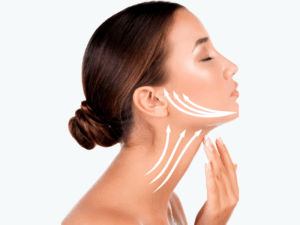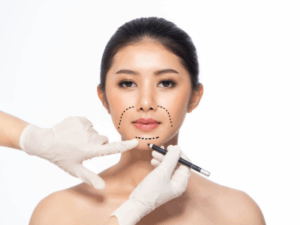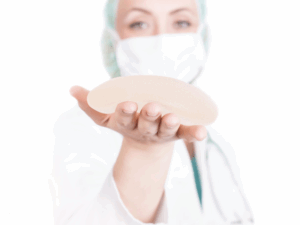Facelift
Wrinkles on face? Signs you may need a facelift

Wrinkles on Face? Signs You May Need a Facelift
Wrinkles on the face are one of the earliest and most visible signs of aging. Whether they appear as fine lines, deep creases, or folds, they often lead individuals to explore cosmetic solutions. But before jumping into treatment, it’s essential to understand what causes wrinkles on the face, how to control them, and when a facelift might be the best option.
What Are Wrinkles on the Face?
Wrinkles are creases or lines that develop in the skin over time due to natural aging, repeated facial expressions, sun exposure, loss of collagen, and lifestyle factors. They typically start forming as early as the late 20s or early 30s. So, at what age do wrinkles start on the face? It varies, but early signs can emerge depending on genetics, stress levels, and skincare habits.
Common Reasons for Wrinkles on the Face
Understanding the reasons for wrinkles on face can help you make better choices to prevent or delay them.
- Loss of skin elasticity and collagen
- Sun exposure and UV damage
- Poor hydration and skin care
- Stress – yes, stress can cause wrinkles on the face
- Smoking and environmental pollutants
- Facial expressions over time (smiling, frowning)
Wrinkles on Face at a Young Age?
Wrinkles on the face at a young age are increasingly common due to screen exposure, stress, and environmental aggressors. If you notice lines on face but not wrinkles, they may be early indicators of skin fatigue and volume loss. Preventive treatments or early interventions can help.
Best Treatment for Deep Wrinkles on Face
So, what is the best treatment for deep wrinkles on the face?
Dr. Faisal Salim, a renowned facial aesthetics expert in Dubai, offers a combination of personalized, effective anti-aging treatments, including:
- Facelift Surgery: The gold standard for those with deep wrinkles and skin laxity. This treatment lifts and tightens sagging facial skin, targeting both superficial and deeper signs of aging.
- Dermal Fillers: These restore lost volume and soften deep lines, especially in the nasolabial folds and cheeks.
- Fat Transfer: A natural approach using your body’s own fat to rejuvenate sunken areas.
- Skin Tightening Lasers: Non-invasive devices to stimulate collagen and reduce fine lines.
For some, the best way to remove wrinkles on the face is a combination of these procedures, tailored to individual needs
How to Reduce Wrinkles on Face Naturally
If you’re wondering how to reduce wrinkles on face naturally, here are a few simple practices:
- Stay hydrated and follow a balanced diet
- Use sunscreen daily
- Incorporate retinol and antioxidants in your skincare
- Practice facial yoga and get regular sleep
However, for moderate to deep lines, professional treatment provides more visible and lasting results.
What exactly is a facelift and how does it work?
A facelift is a surgery that addresses signs of aging in the face and neck. It involves tightening underlying muscles, removing excess skin, and repositioning tissues to restore a youthful facial structure.
Over time, the skin loses its elasticity, facial muscles weaken, and fat pads shift, leading to wrinkles, sagging skin, jowls, and a tired or worn-out appearance.
A facelift works by addressing these issues at their source—beneath the skin—resulting in a more lifted, youthful, and refreshed facial contour.
Facelift: The Best Treatment for Wrinkles on Face
Comprehensive rejuvenation
A facelift addresses deep wrinkles, sagging skin, jowls, and loss of facial volume—all in one procedure. It repositions and tightens the underlying facial tissues and muscles, not just the skin, resulting in a natural and long-lasting youthful appearance.
Dramatic, long-lasting results
Unlike non-surgical treatments, a facelift provides results that last 10 years or more. A facelift can take a decade or more off your appearance, smoothing out wrinkles, restoring lost volume, and redefining your jawline, cheeks, and neck.
Boosts confidence
A facelift offers more than just physical transformation—it can renew your confidence and enhance your self-image. Patients often report feeling more vibrant, energetic, and motivated in both their personal and professional lives after seeing their revitalised, youthful appearance.
Treats the cause, not just the symptoms
Unlike surface-level treatments such as creams, peels, or injectables that temporarily improve the skin’s texture or fill wrinkles, a facelift corrects underlying muscle laxity and tissue descent—the root cause of aging signs like jowls and deep folds.
Customisable
Modern facelift techniques can be tailored to your age, facial anatomy, and specific aging concerns. Options include:
- Full facelift – targets the entire face and neck.
- Mini facelift – ideal for mild to moderate signs of aging.
- Mid-face lift – focuses on cheeks and under-eye wrinkles.
- Neck lift – often combined to treat neck bands and sagging.
Are you a candidate for a facelift?
If you relate to several of the following points, a facelift might be the right step:
- You’ve tried non-surgical options with minimal or short-lived success
- You’re bothered by sagging skin, jowls, or neck laxity
- You want long-lasting and noticeable improvement
- You’re in good physical and mental health
- You have realistic expectations and understand the facelift recovery process
What to expect after a facelift?
After a facelift, it’s normal to go through a recovery and adjustment phase as your body heals and the results gradually become visible.
In the first few days, expect swelling and bruising, which usually begin to subside within 2–3 days. Rest is essential, and your surgeon may recommend pain medication and cold compresses to ease discomfort.
By 2 to 4 weeks, most bruising and swelling should have significantly diminished. However, mild numbness or tingling in the treated areas may persist. At this time, you can generally resume most of your regular daily activities.
Between 4 and 8 weeks after surgery, the final facelift results will start to become more noticeable, revealing a refreshed, more youthful appearance.
How to reduce wrinkles on face naturally: Tips that work
Whether or not you choose surgery, it’s vital to maintain your skin’s health. Here’s how to control wrinkles on face:
- Wear sunscreen daily—even when indoors.
- Stop smoking and limit alcohol consumption.
- Follow a consistent skincare routine with proven anti-aging ingredients.
- Stay hydrated and eat antioxidant-rich foods.
- Manage stress through yoga, meditation, or therapy.
- Sleep on your back to avoid compression lines on your face
Contact Dr Faisal Salim for facelift surgery in Dubai
If you’re considering a facelift surgery to restore a more youthful, confident appearance, you’re in expert hands with Dr Faisal Salim.
A highly experienced and board-certified plastic surgeon in Dubai, Dr Faisal is renowned for delivering natural-looking results through advanced cosmetic techniques. With a personalised approach to every patient, he ensures that your facial rejuvenation journey is safe, seamless, and tailored to your unique features and goals.
Book your consultation today and take the first step toward looking as vibrant as you feel.
FAQs
The best treatment for wrinkles on face depends on the type and severity of wrinkles. For fine lines, treatments like Botox, retinoid creams, or laser resurfacing can be effective. For deeper wrinkles and sagging, a facelift is often considered the most effective, long-lasting solution.
Wrinkles can appear as early as the late 20s or early 30s, especially around the eyes and mouth. Factors like sun exposure, smoking, and stress can cause wrinkles on face at young age. Deeper wrinkles typically become more noticeable in the 40s or 50s.
To get rid of wrinkles on face, you can start with lifestyle changes (hydration, sun protection, no smoking), use anti-aging skin care products, or explore professional treatments like microneedling, chemical peels, dermal fillers, or a facelift for more permanent results.
Yes, chronic stress raises cortisol levels, which breaks down collagen and elastin in the skin. This accelerates the formation of fine lines and wrinkles, especially around the forehead and around the eyes.
You can start as early as your late 20s for prevention. Most people begin treatments in their 30s or 40s when lines become more visible.
To minimise facelift scars, choose a skilled surgeon, follow all post-op care instructions, avoid smoking, protect incisions from the sun, and use scar-reducing creams as advised by your doctor.
The best way to remove wrinkles on face—especially deep, static lines—is through a facelift, which tightens the skin and underlying muscles for long-lasting rejuvenation. For less advanced signs of aging, non-invasive options like laser therapy, fillers, or radiofrequency treatments may be suitable.
Most patients report mild discomfort, which is managed well with prescribed medication. Any tightness or swelling typically subsides within a few days.
For deep wrinkles, the most effective treatment is often a combination of dermal fillers and facelift surgery, depending on the degree of skin laxity. Fillers restore lost volume, while a facelift addresses sagging and permanently smooths deep creases.
Yes. Many patients combine a facelift with eyelid surgery, fat grafting, brow lifts, or laser resurfacing for more complete facial rejuvenation.
Stay hydrated, use sunscreen, eat antioxidant-rich foods, and moisturise regularly. These can help reduce fine lines but may not remove deep wrinkles.
Patient Testimonials





